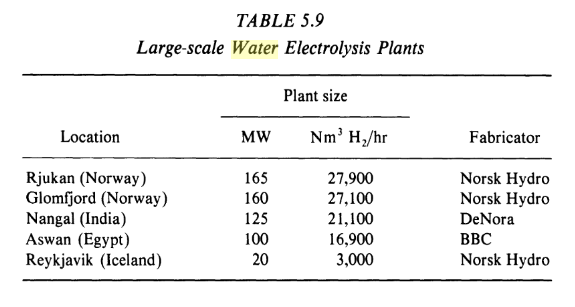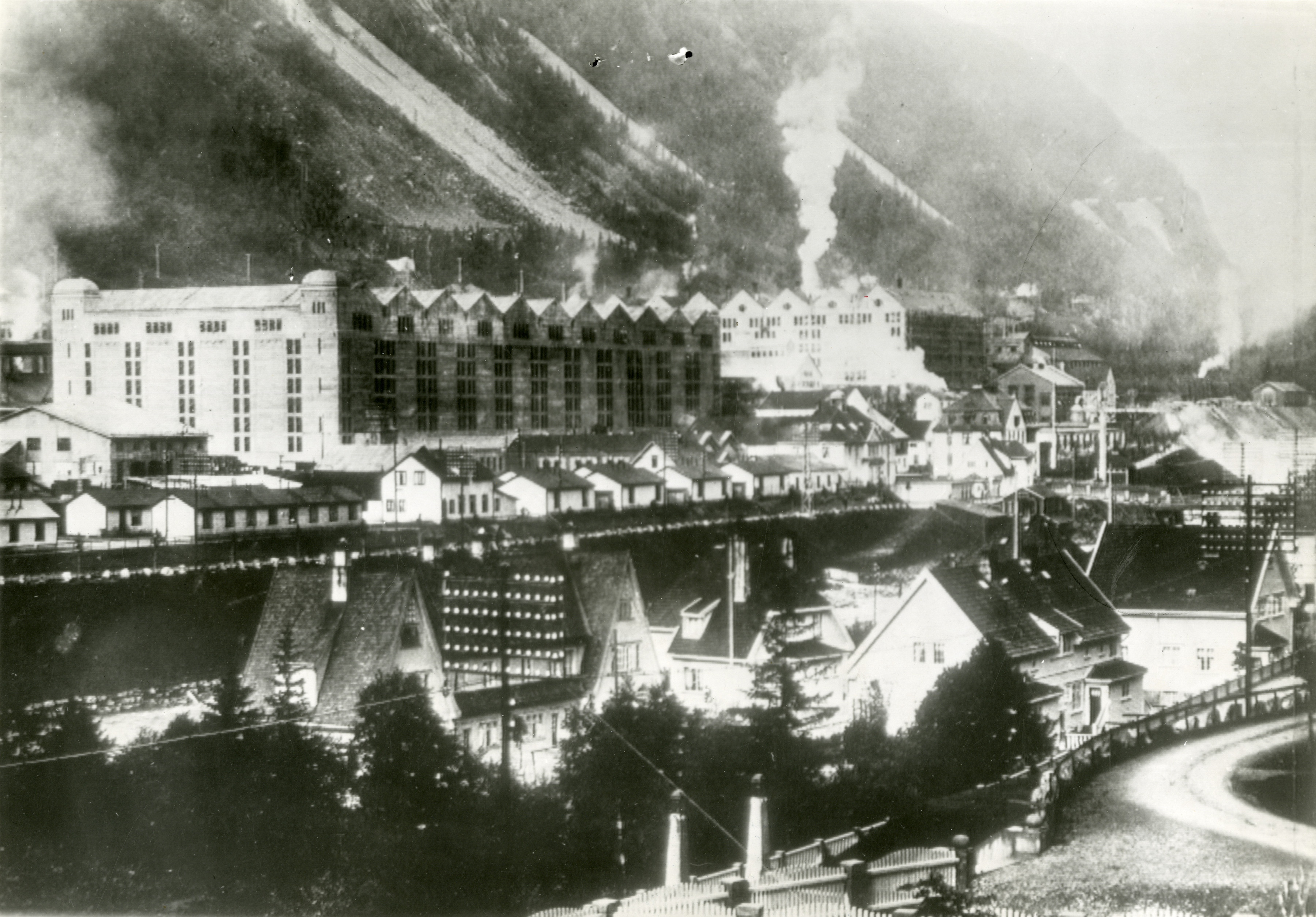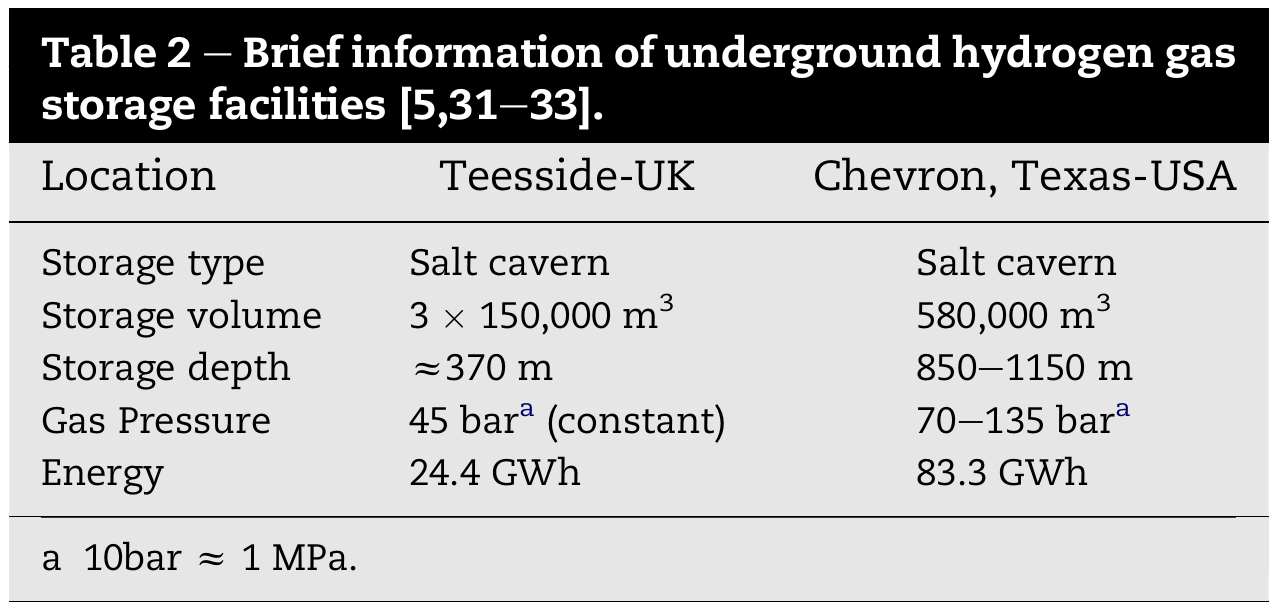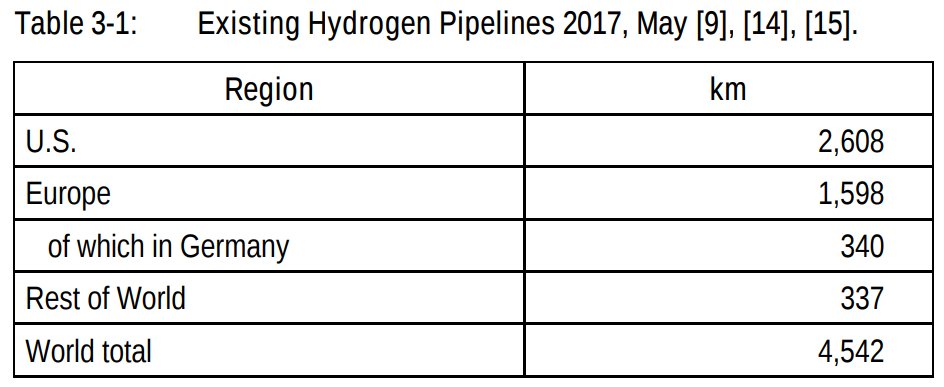Nothing new about electrolytic hydrogen
First Posted: 2020.07.31, Last Revised: 2020.07.31, Author: Tom Brown
Carbon Brief Q&A that embedded the post
Despite the current hype, there's nothing new about electrolytic hydrogen.
- 100 MW electrolysers since late 1920s for fertiliser and heavy water
- 100 GWh salt cavern storage since 1960s
- 4500 km hydrogen pipelines today
What was missing was abundant low cost power.

Figure 1: NEL's Rjukan electrolysers from the 1920s
From 1920s-1970s, 100+ MW water electrolysers were built across world to meet demand for ammonia for fertiliser.
Prerequisite: cheap power from hydro dams.
All were dismantled as other power demand grew and fossil gas became available to make ammonia.

Figure 2: Large electrolysers built in the past (Electrode Processes and Electrochemical Engineering, Fumio Hine, 1985)
Electrolysis was also the means of making heavy water (D2O), a neutron moderator, from its discovery in the 1930s until the GS process replaced it in the mid-1940s.
Heavy water was crucial for making the atomic bomb.
This made electrolysis of great military importance in WWII.

Figure 3: Rjukan in the 1930s
History buffs can read more about the US heavy water production program here:
https://en.wikipedia.org/wiki/P-9_Project
and about Allied attacks on the Norwegian heavy water plant when it was under Nazi occupation:
https://en.wikipedia.org/wiki/Norwegian_heavy_water_sabotage
See also:
https://ahf.nuclearmuseum.org/ahf/history/heavy-water-reactors/

Figure 4: 1965 Film: Heroes of Telemark
Hydrogen has been stored underground in salt caverns at petrochemical plants since the 1960s. Two large multi-GWh facilities operate in the UK and in Texas:
https://doi.org/10.1016/j.ijhydene.2012.07.111
https://doi.org/10.1039/C8EE01157E

Figure 5: Salt caverns used for hydrogen
There are around 4500 km of hydrogen pipelines operational worldwide, so this isn't exactly an unknown quantity either:
According to this report, there were 4542 km of hydrogen pipelines worldwide in 2017.
https://juser.fz-juelich.de/record/842477/files/Energie_Umwelt_408_NEU.pdf

Figure 6: Hydrogen pipelines worldwide
So what's the lesson?
- Hydrogen technology is there for when we need it.
- Electrolytic hydrogen will only make economic sense with abundant low-cost power, as it has in the past.
Opinion: In short-term we should focus on energy efficiency, displacing fossil electricity generation with low-emission sources, and electrifying other sectors before scaling up water electrolysis in a big way…
but we may need electrolytic hydrogen in the medium/long-term to decarbonise some chemical sectors, high-density fuels, some industry demand and some backup electricity/heat.
It makes sense to push R&D and niche electrolysis in the meantime.
Enjoy your weekend!